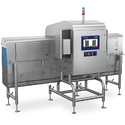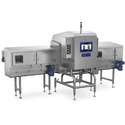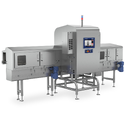 |
Glass packaging is one of the top choices of packaging material for food, beverage, cosmetic and pharmaceutical products; however, its natural fragility ensures that all-round glass inspection is paramount.
The global glass packaging market is projected to reach $55billion by 2020[i]. This is driven by brand owners, looking to benefit from its recyclability, sterility, durability and non-permeability attributes. Glass packaging is also often favoured amongst consumers seeking a premium look-and-feel or who would like full visibility of their chosen product.
Despite the popularity of glass packaging, manufacturers need to ensure that there is no risk of glass-in-glass contamination entering the marketplace. In 2016/17, 5% of incidents reported to the UK Food Standards Agency resulted from foreign bodies including glass. The number of product recalls may be low however the consequences can be fatal or life-changing to consumers, with long-lasting repercussions for all businesses involved in the supply chain.
To help glass packaging manufacturers ensure that consumers are safeguarded from glass-in-glass contamination, we have put together a series of informative tools. You can find out more about:
- The Benefits of Glass Packaging
- How Glass-in-Glass Contamination Occurs
- Why X-ray Is the Most Suitable Technology for All-round Inspection
- The Challenges that Glass Poses to X-ray Inspection Technology
- How to Optimize All-round Inspection Through the Correct Choice of X-ray Beam Technology
- How the Smart Design of your Production Line Can Further Enhance Glass-in-Glass Inspection
- The Importance of Regular Testing of Glass Inspection Systems
Integrating the correct x-ray beam technology with robust product handling devices will help to optimize all-round glass inspection thereby preventing any glass-in-glass contaminated products reaching the consumer.
[1] Global Industry Analysts, Inc. http://www.strategyr.com/pressMCP-2762.asp




